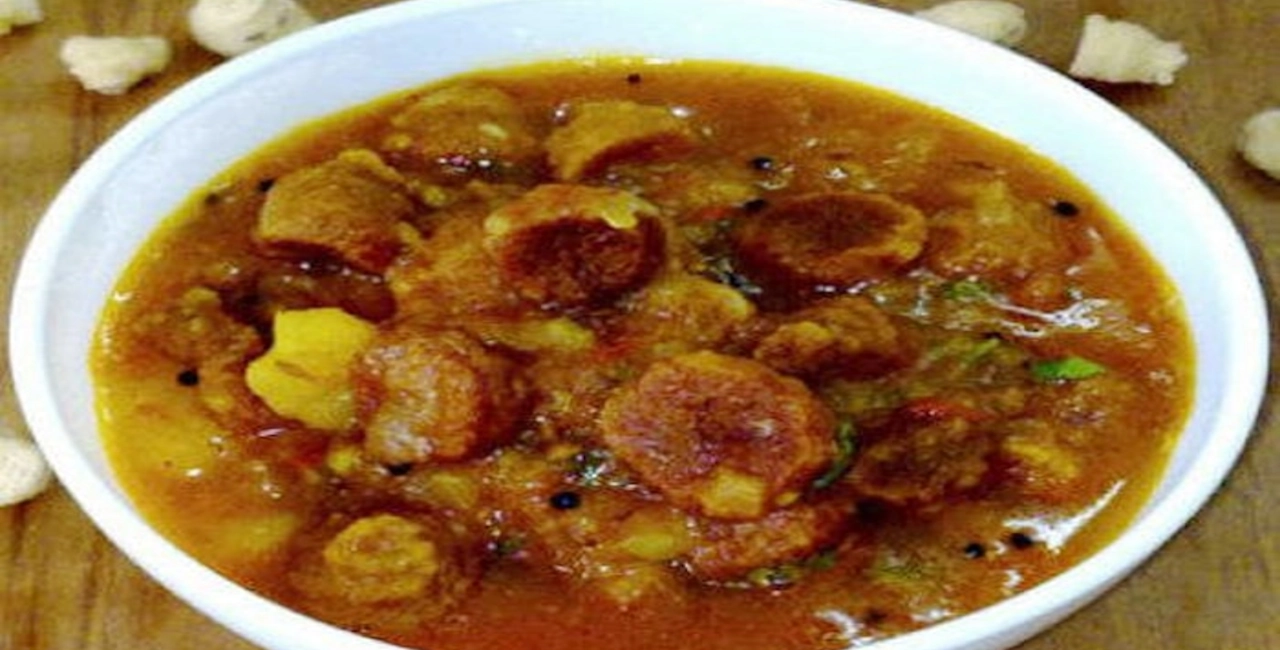Currently Empty: ₹0.00

Baadi is a cherished dish from the hilly state of Uttarakhand, particularly from the Kumaon region. Simple in its ingredients yet rich in flavor, Baadi has been a staple food for generations of Kumaoni people, offering not just sustenance but a taste of the region’s cultural and culinary identity. This dish, made from a variety of grains and pulses, reflects the resourcefulness of the local people, who have adapted their cooking styles to the environment and agricultural produce of the mountains.
Though Baadi might seem humble, it is more than just a meal—it is a representation of the traditional lifestyle of the people of Uttarakhand, their connection to the land, and the wholesome simplicity that characterizes their food.
Ingredients and Preparation
Baadi is primarily made from coarsely ground grains or flours, typically mandua (finger millet) or buckwheat. These grains are known for their high nutritional value, which makes Baadi not just filling but also a healthy dish. In some versions, wheat flour or barley is used, depending on the season and availability of ingredients.
The preparation of Baadi is straightforward, requiring only a few steps but some careful attention. The flour is roasted in a pan until it turns slightly brown, and then water is added slowly while stirring continuously to prevent lumps from forming. This mixture is cooked until it thickens into a smooth, pudding-like consistency. A pinch of salt is added for taste, and the dish is traditionally served with a drizzle of ghee (clarified butter) to enhance its flavor.
Baadi is often served alongside pahadi dal (local lentils), a variety of leafy greens, or a curry like Dubuk or Churkani made from pulses. A spoonful of Bhaang ki Chutney, a tangy and spicy condiment made from roasted hemp seeds, is a common accompaniment, adding a burst of flavor that complements the simplicity of Baadi.
Nutritional Benefits
Baadi is not only a comfort food but also a powerhouse of nutrition. The grains used in its preparation, especially finger millet (mandua), are rich in fiber, protein, calcium, and iron. This makes Baadi an excellent food for maintaining bone health, improving digestion, and providing long-lasting energy. The simplicity of the ingredients ensures that it is a wholesome meal, free from preservatives and additives, making it ideal for people looking for nutritious and natural food options.
The addition of ghee, which is rich in essential fatty acids and antioxidants, provides a balance of fats that support digestion and overall well-being. Baadi is a dish that reflects the Kumaoni people’s deep understanding of their local environment and the nutritional needs required to thrive in the cooler, mountainous climate.
Cultural Significance
In Uttarakhand, food is not just about nourishment but also about tradition and community. Baadi is often seen as a symbol of the simple, agrarian lifestyle of the people in this region. The grains used in the dish—finger millet, wheat, or barley—are grown locally, and their harvest is celebrated as part of the region’s agricultural festivals, such as Harela and Ghughutiya.
The ease of preparation and the availability of ingredients made Baadi a common dish in the homes of Kumaoni families, especially during times when they had to rely on the produce of their fields and forests. Over the years, despite the modernization of food habits, Baadi has retained its place in the culinary traditions of Uttarakhand, often being prepared for festivals, family gatherings, and religious ceremonies.
Baadi is also closely associated with the health and well-being of the people. In the past, it was often considered food for the working class—farmers, herders, and laborers who needed energy-dense meals to sustain them through physically demanding days. Today, it is recognized for its nutritional value and is appreciated by people from all walks of life, not just in the villages but also in urban areas where traditional dishes are being revived.
Regional Variations
While Baadi in its simplest form is made from finger millet or buckwheat flour, there are several regional variations based on local preferences and availability of ingredients. In some parts of Kumaon, Baadi is made with amaranth flour or kuttu atta (buckwheat flour), which adds a distinct nutty flavor to the dish. In Garhwal, a region adjacent to Kumaon, a similar dish called Phanu is made using ground pulses and is served with Baadi, highlighting the diversity of Uttarakhand’s culinary traditions.
In certain festivals, Baadi is prepared using jhangora (barnyard millet), another grain native to the hills. This gives the dish a different texture and flavor, which is celebrated during religious festivals and family feasts.
The Revival of Traditional Cuisine
As the world embraces healthier, natural diets, there has been a renewed interest in traditional foods like Baadi. In recent years, efforts have been made to promote Uttarakhand’s culinary heritage by incorporating traditional recipes into mainstream diets. Restaurants in urban areas are now serving Baadi alongside more contemporary dishes, giving tourists and locals alike a taste of authentic Kumaoni cuisine.
Several health-conscious individuals and organizations are promoting millet-based diets, recognizing the benefits of these ancient grains for modern lifestyles. Baadi, with its rich history, ease of preparation, and nutritional value, is seen as a perfect example of how traditional foods can be both delicious and healthy.
Conclusion
Baadi, with its roots deep in the Kumaoni culture of Uttarakhand, is a dish that tells a story of resilience, simplicity, and nourishment. It represents not just the food of a region but the spirit of its people, who have lived in harmony with their environment for centuries. Whether you enjoy it for its taste, its health benefits, or its cultural significance, Baadi remains a timeless dish that continues to connect generations to the rich culinary traditions of the Himalayan hills.


